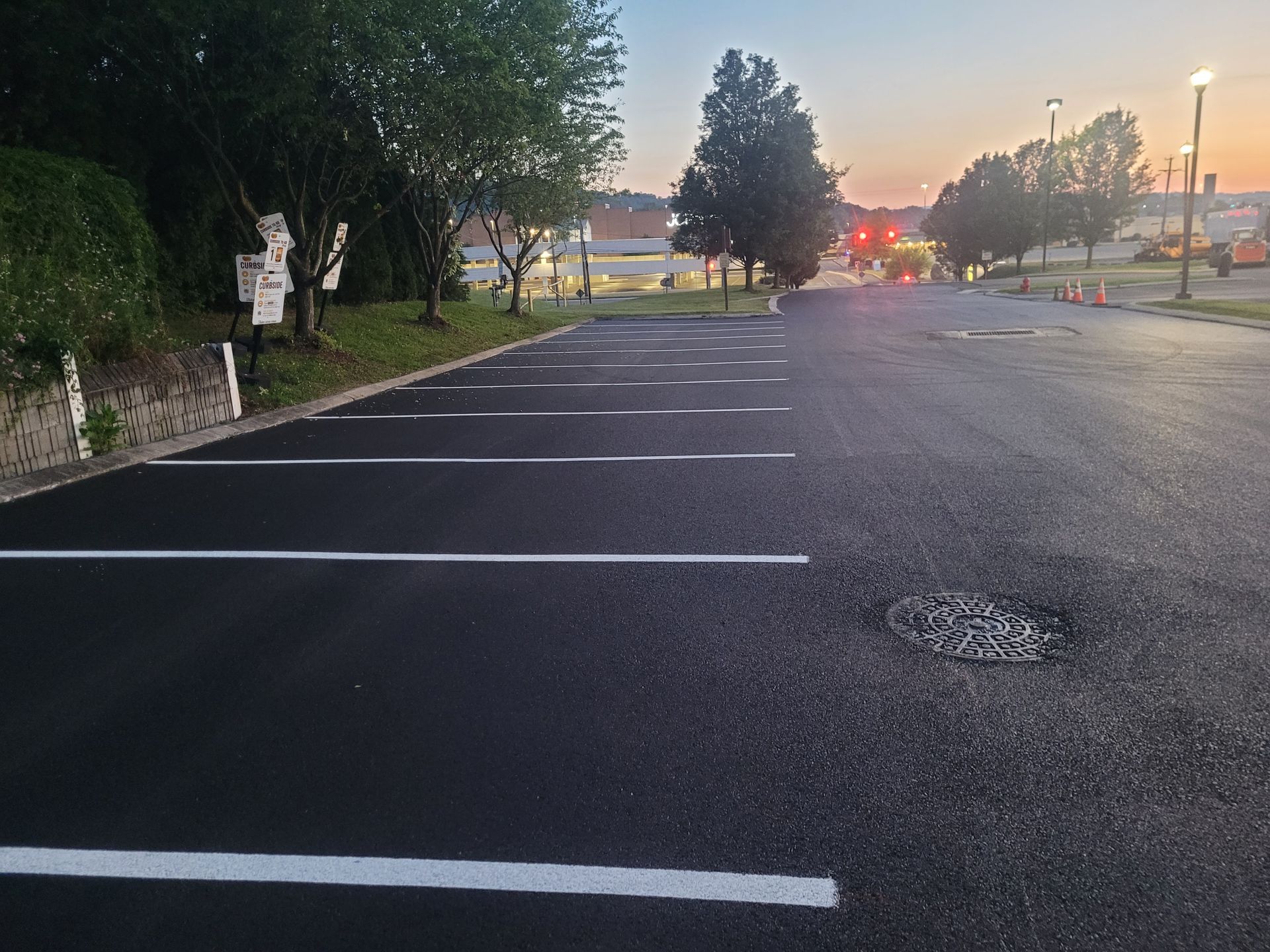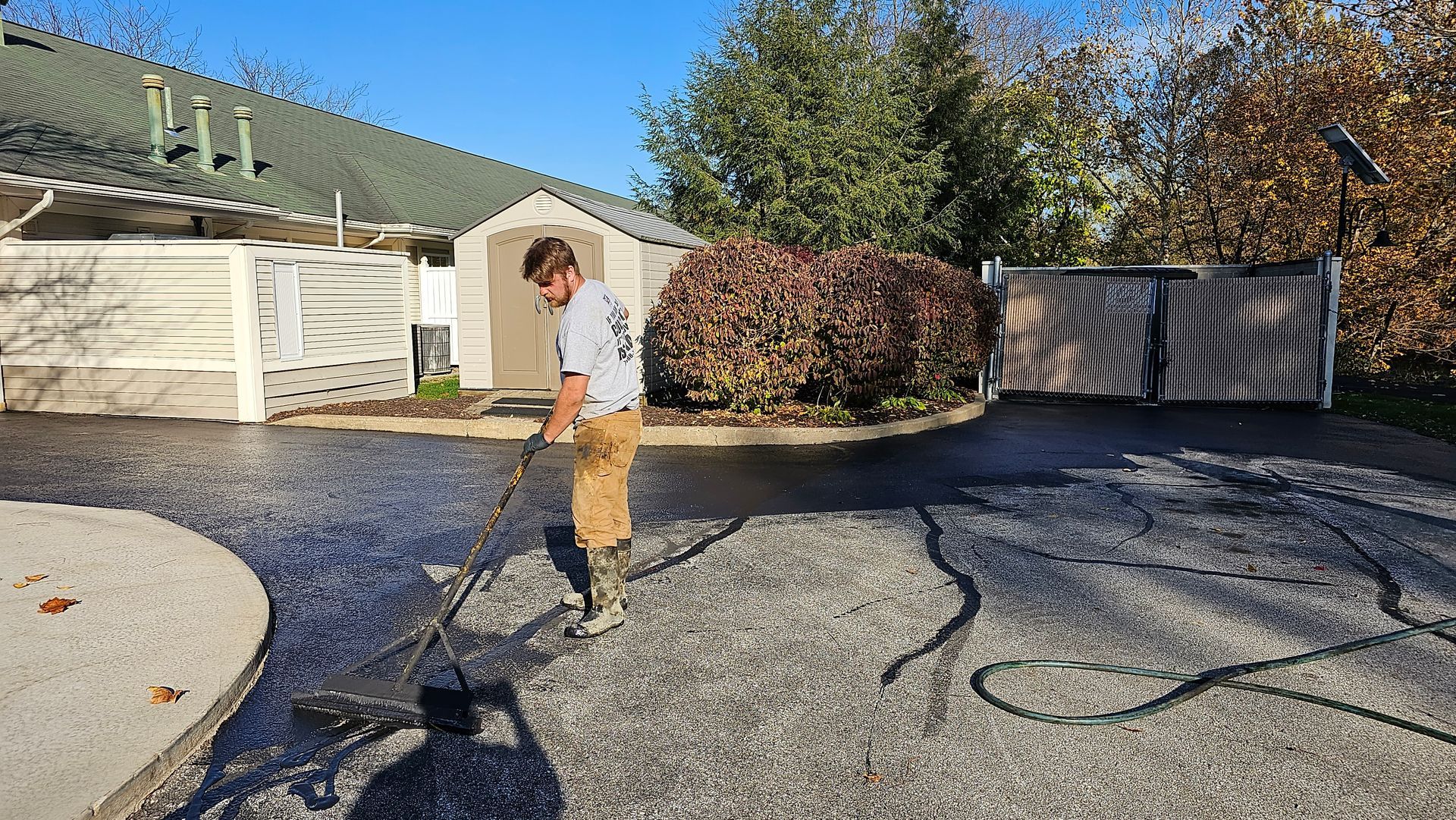Blog

☀️ How Warm Weather Affects Your Pavement Did you know asphalt and concrete react differently to extreme temperatures? Asphalt is better suited for cooler climates — it handles the cold well, but in extreme heat, it can become soft and oily. Concrete performs better in warmer climates , but it’s more vulnerable in the winter. Water can seep in, freeze, and cause cracks. Concrete generally stays cooler than asphalt due to its lighter color, while asphalt absorbs sunlight and gets hotter to the touch. If you’re a PA local like us, heat extremes might not be common — but these facts are still helpful to know, especially for those in warmer regions. Maintenance Tips to Extend the Life of Your Pavement The first step in your maintenance should be to inspect it and see if you can find any notable cracks, potholes, or uneven surfaces. Take note if it looks like you need a new sealcoat. Typically, asphalt that needs a new sealcoat will look faded and cracked. For concrete, you can do a water test. If the water absorbs straight into the concrete instead of beading up, it may be time for a re-sealing. Generally, both surfaces should be resealed every other year on average , depending on their condition. You can also have bigger cracks crack filled to help preserve the surface. The second step in your maintenance plan should be to sweep the surface of any leaves and debris. Power washing may be required to help remove stains, dirt buildup, or algae. If you do notice that you have some deeper stains, cracking, or faded color, it is most likely time to reseal. Luckily, we offer that as a service! Feel free to contact us using the form below or call us to get a quote. Some benefits of sealing are the improved aesthetic of course, but also UV protection, extended life, stain prevention, and decreased risk of more cracks. Another easy way to maintain a good-looking pavement is to manicure the landscape surrounding by trimming any vegetation surrounding it. Keep in mind, you do not want to plant any trees or plants with thick roots near the pavement as it could grow underneath and cause cracks and lift the pavement. Lastly, consider the drainage in your area. Poor drainage could cause the foundations of your pavement to deteriorate quicker. Addressing these issues will help extend the life of your surfaces and prevent further issues down the line. When Should I Call the Pros? If you notice: Large cracks Potholes Major uneven sections …it may be time for a professional resurface or repour. Regular maintenance helps delay these big repairs and catching them early makes all the difference. It may seem burdensome but taking a few hours this summer to maintain your pavement can save you lots of money down the road! Helpful Reminders for Summer Upkeep Avoid parking in the same spot on asphalt during extreme heat — it can cause indentations. Schedule sealing before winter to get ahead of the weather. Set seasonal reminders for quick pavement check-ins.

When I first started working in construction, I’ll admit—I didn’t know the main differences between concrete and asphalt, and I know I’m not alone! Many people use the terms interchangeably, but these materials have distinct differences in cost, appearance, durability, and best use cases. Today, let’s break down these differences so you can make an informed decision for your driveway, parking lot, or other project. Choosing the right material will ensure you know what to expect in terms of appearance, maintenance, and longevity. Let’s dive in! First, let's explore the key differences of concrete and asphalt a little deeper. Appearance and Composition Concrete: Light grey and may see small specks of sediment and rock upon close examination Made from aggregates, water, and cement which acts as the binder Admixtures may be added to enhance the behavior of the concrete in certain conditions Asphalt: Black and consistent finish Made from sand, gravel, and aggregates with bitumen acting as the binder Curing Method: Concrete cures due to a hydration reaction between the cement and water Concrete is laid down and finished by hand Asphalt hardens as it cools down, as opposed to a chemical reaction like concrete Asphalt is rolled by a machine to flatten out the surface Installation & Curing/Dry Time Concrete: 24 to 48 hours is dry enough for light traffic, but at least 7 days until you should drive on it May take up to 28 days to fully cure The thicker and bigger the concrete area is, the longer it will take. Asphalt: 2-3 days, however, it cures fully over the span of a year Average Lifespan of a Driveway Concrete: 25 to 30 years on average if you take proper care during the changing seasons Can last up to 50 years Asphalt: 15 to 30 years with proper care Now that we discussed the key differences, I’d like to also explain the Pros and Cons of each product. From there, you can make your own decision on which product best suits your project! You can use the photos below as a reference to see the difference between the two.

If you own a driveway or parking lot, you’ve probably heard of seal coating—but do you know how often it’s needed? Regular maintenance can prevent costly repairs and keep your asphalt looking great for years to come. Sealcoating, by definition, is applying a sealing coat over an asphalt paved surface to improve durability and longevity. While it is just one of several maintenance strategies you can use to protect your asphalt, it is an important step that not only enhances appearance but also provides a protective barrier on the top layer. However, keep in mind that for deep cracks or structural issues, you will need to go a different route to repair them. These repairs would need to be done before sealcoating for the most effective result. Now, this begs the question… how often is sealcoating necessary? Well, if you want to be on the SUPER safe side, you may opt to sealcoat each year before winter comes. However, that is typically not needed, and you can go 2-3 years in between each coat. It is integral that you keep an eye out for any cracks, stains, or other damage and address them as soon as possible. Signs It’s Time to Sealcoat Cracks forming Fading color You can't remember the last time you got it seal coated Increased wear from traffic




